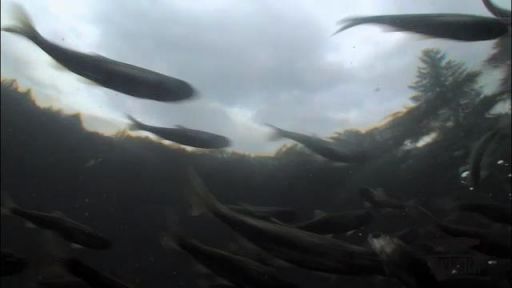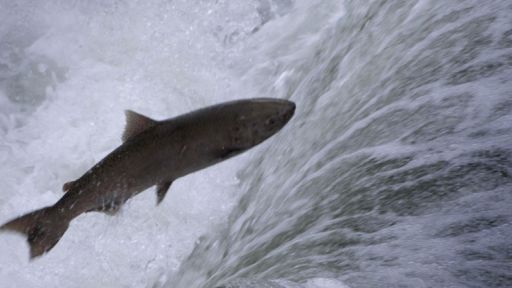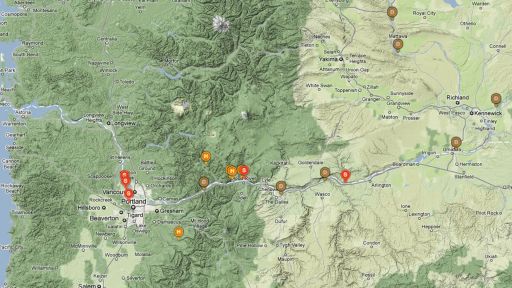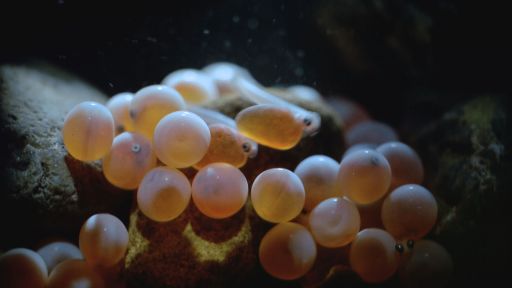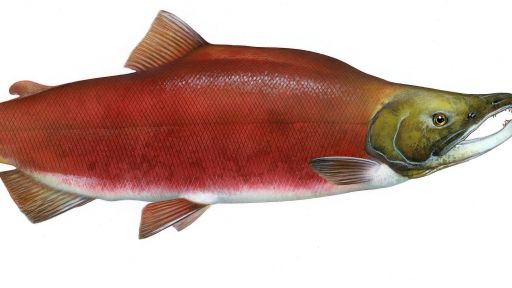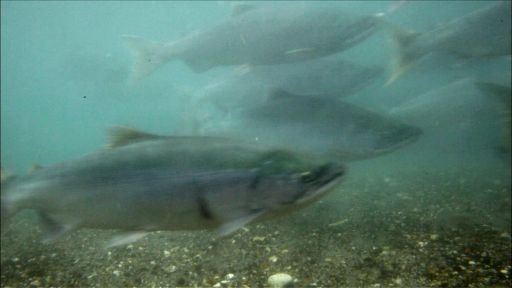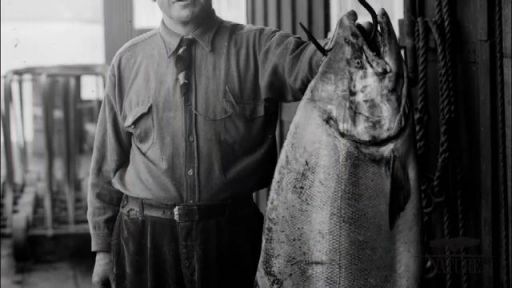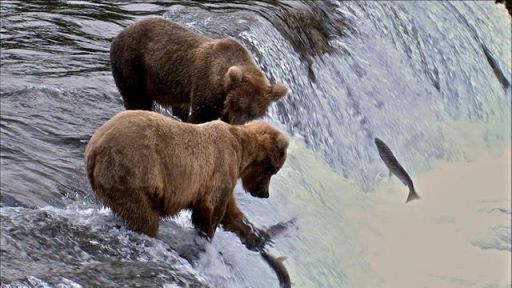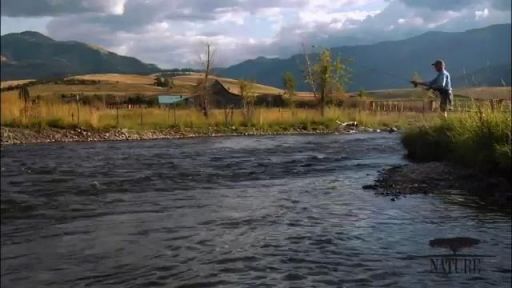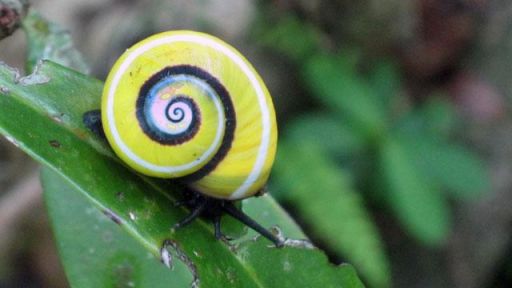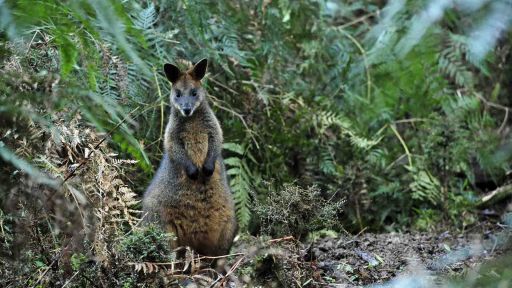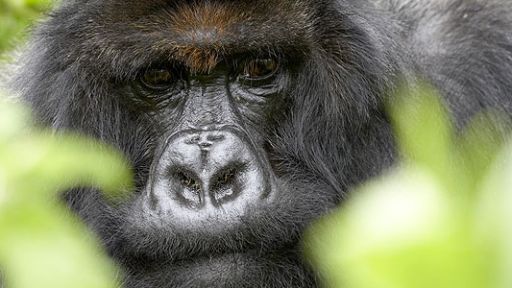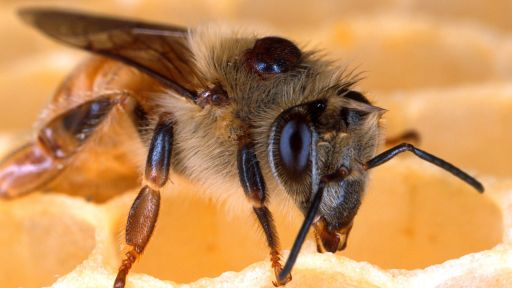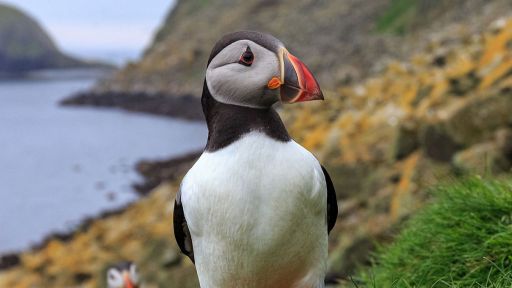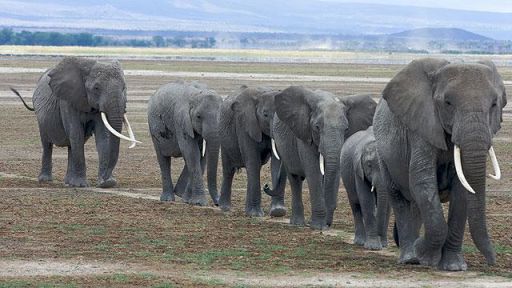Filmmaker Jim Norton discusses the making of Salmon: Running the Gauntlet. Once among the most productive salmon fisheries on the planet, the Columbia River in the Pacific Northwest today is marked by the alarming absence of the region’s staple fish. Many salmon populations are already extinct or endangered due to overfishing, habitat loss and dams, making their future in the region unclear. Here, Norton discusses what interested him in telling their story, and the complex reality of our efforts to save them.
What first interested you in the story of the Pacific Northwest salmon?
One of the great parts of this project was the opportunity to come back around to where I first heard the story – from Jerry Myers, who appears in the film and tells pretty much the same thing he told me shortly after I started guiding in Idaho. I was young, beginning and ending each day in a sleeping bag in the wilderness, well insulated from the burdens of conflicting education or experience… everything seemed perfect to me. And then one afternoon Jerry and I were fishing together, far up a tributary creek of the Middle Fork of the Salmon River. The Salmon is part of the upper vasculature of the Snake and Columbia River systems, an alpine womb which once produced as many Chinook salmon as anywhere on the planet. We lingered a long time at a place called the “salmon pool,” and Jerry started telling me what used to be there. It was actually a little frustrating at the time; it was hard to honor his more complete version of a landscape I knew as a form of ideal.
As guides, so much of our work involved the language of the pristine, the iconography of wildness, the gin clear water of Salmon Rivers and Redfish Lakes. Although the narrative was very much part of my life, much of that richness is just an anecdote for the generation who arrived in the Pacific Northwest after about the 1970s. It’s a story someone else tells us. Our timeline of memory begins just as that of abundant salmon was ending, and with it the biological and cultural nourishment on which so much depended. My experience as a guide, and the connection I am making now as a full-time resident, initially had no lens through which I could see working on rivers, facilitating what has essentially become a leisure pursuit, as a cultural remnant of once more robust and varied interactions with the land and water. So my interest in this story was originally very personal, an attempt to explore the paradox that a lot of the Pacific Northwest lives within: strong identification with the idea of a natural and cultural heritage derived from abundant salmon, but having just missed out on the heritage itself.
What were you most surprised to learn about salmon and/or the process and effects of harvesting them during the making of this episode?
Without question, I was most impressed by the degree to which we took the original myth of protection through production and never looked back. The scale of the infrastructure that has developed around providing alternatives to salmon swimming up and down streams – the billion dollar “mitigation economy” – is simply staggering.
I was also surprised by the degree to which everyone I met on the ground was genuinely engaged in doing the most they could for salmon, appropriate to the context in which they were working. The hatchery programs are trying to produce as many healthy juveniles as they can; the biologists in the hydropower system are trying to pass as many live fish as possible around the dams; the pilots of the juvenile fish transport barges and trucks are checking stress levels in the tanks; the predator chasers were really trying to reduce the number of salmon eaten by sea lions and terns. Telescoping in on each vignette, it looks like a lot of people doing everything possible to solve their piece of the problem. It’s when you open up and show the accumulation of those contexts that things get ugly, and arguably absurd.
Can you explain the significance of the federal salmon policy decision in the Columbia River Basin that will happen this spring? What is at stake?
In short, the listing of 13 Columbia River salmon and steelhead species as endangered or threatened under the Endangered Species Act requires the government to develop a plan, or biological opinion (“bi-op”), for their protection and restoration. Both the 2000 and 2004 salmon plans were rejected by the courts, meaning that the current administration’s recently submitted plan is the latest in over a decade of modification, argument, and litigation. Technically, the bi-op covers the management of the hydropower system on the Columbia and Snake Rivers. An imminent decision from the federal judge should determine whether the most recent iteration of the proposed plan is legal. Of course, whether our approach to salmon management is actually sufficient for their protection, let alone their restoration, isn’t determined in a courtroom. When Jerry Myers is kept awake by the sound of splashing salmon in Indian Creek, when David Duncan can crouch by the river and find fire in cold stone, when the Tribes are nourished in the many ways derived from abundance…then and only then will we know we’ve done well.
In the episode, it is said that, “If the fish were in any worse shape, they wouldn’t be savable, if they were in any better shape, people wouldn’t care as much. This is the time.” Do you agree with that? Do things have to get bad enough for people to care enough to make a change?
I agree this is the time for a radical re-evaluation of the goals and approach to salmon recovery. Many people have cared, a lot, about declining salmon populations for over a hundred years. Unfortunately, sometimes a response to declining resources is an even tighter grip on the agents of that decline. Even as the situation becomes more desperate, it becomes harder and harder to make big changes because everything feels more fragile. In this film, we wanted to get beyond the documentation of now familiar insults to nature and examine the role, and legacy, of how we have tried to save.
Do you see the salmon situation as proof that human ingenuity is no match for Mother Nature?
No. That proof has been offered too many times before, in too many different ways. The story of the Columbia is, perhaps, an affirmation of that maxim. The modern salmon situation does express interesting components of the relationship between human ingenuity and nature. Something we seem to have lost is the appreciation that the abundance we’re now working so hard, at such cost, to wrestle out of the Columbia is the default condition of the place. Abundance is not something we’re going to tease from the river by being clever. The problem here is shifting baselines. Diminishing abundance determines each new generation’s opportunities on the Columbia; these present opportunities become our memories of a collective past, and together they mark the boundaries of what we imagine it could be again. The thrilling potential of restoration, then, isn’t just about more fish – it’s about expanding our capacity to imagine, increasing opportunities to live a life in the story of our choosing.
How do the Tribes’ relationships to salmon fit into the picture going forward?
The additional levels of complexity and intensity inherent to the tribes’ relationship to this story are humbling. Since no 50-minute program can cover everything, we wanted to focus on the Euro-centric, techno-industrial mitigation component of this story. Of course we make reference to the issue as it concerns the Tribes, but they are still very much in the process of working it out for themselves. I hope they find ways to share their stories, because those stories are so terribly underrepresented in the dialect of salmon science and conservation. There are many expressions of what we know about salmon other than what can be plotted, shaded, extrapolated and correlated, including things we can measure but also things we can’t. This information has been part of indigenous communities for millennia. Comprised of replicated observations over many generations of time, these knowledge systems are not only inherently scientific; they represent our only connection to the deep time on which most ecological systems operate.
Equally meaningful, they also encompass the culture of respect that evolved among people as a function of profoundly intimate experience with the specific environment around them, not only as a form of ritual but as an application of effective governance. Information is shared as a narrative covering many aspects of life in the watershed, not exclusively packaged as data sets. We should be maintaining and promoting this paradigm, where the results of formal research are incorporated into a broader sense of place that includes indigenous understanding and oral histories.
There are so many complicating factors for the Tribes within the context of their separate and collective histories, the struggles they have had getting their treaty rights affirmed legislatively and judicially, how that struggle has influenced their considerations about what to fight for and how, what kind of relationship they will have with commercial fishing and hatcheries. As it concerns the nature and extent of salmon recovery, what the Tribes decide is good enough will have a big effect on what happens with salmon in the Columbia.
What message do you hope audiences will take from this episode?
First, we hope audiences will simply celebrate salmon themselves – their truly extraordinary life history and why they stubbornly remain icons of wildness, resilience, and abundance. Certainly, we hope this episode will contribute to an appreciation of their role in stitching together oceans and continents, estuaries and alpine meadows, coastal rainforests and high deserts. By extension, people should come away with an understanding of why their decline is so consequential on so many levels.
Also, we hope audiences will explore the original assumptions that informed our approach to managing salmon – and how committed we remain to trying to make that story work despite 150 years of evidence that those assumptions might be leading us astray. At incalculable cost, we constructed a reality out of our illusions and have forgotten which is which. Maybe it’s time for a new story.

